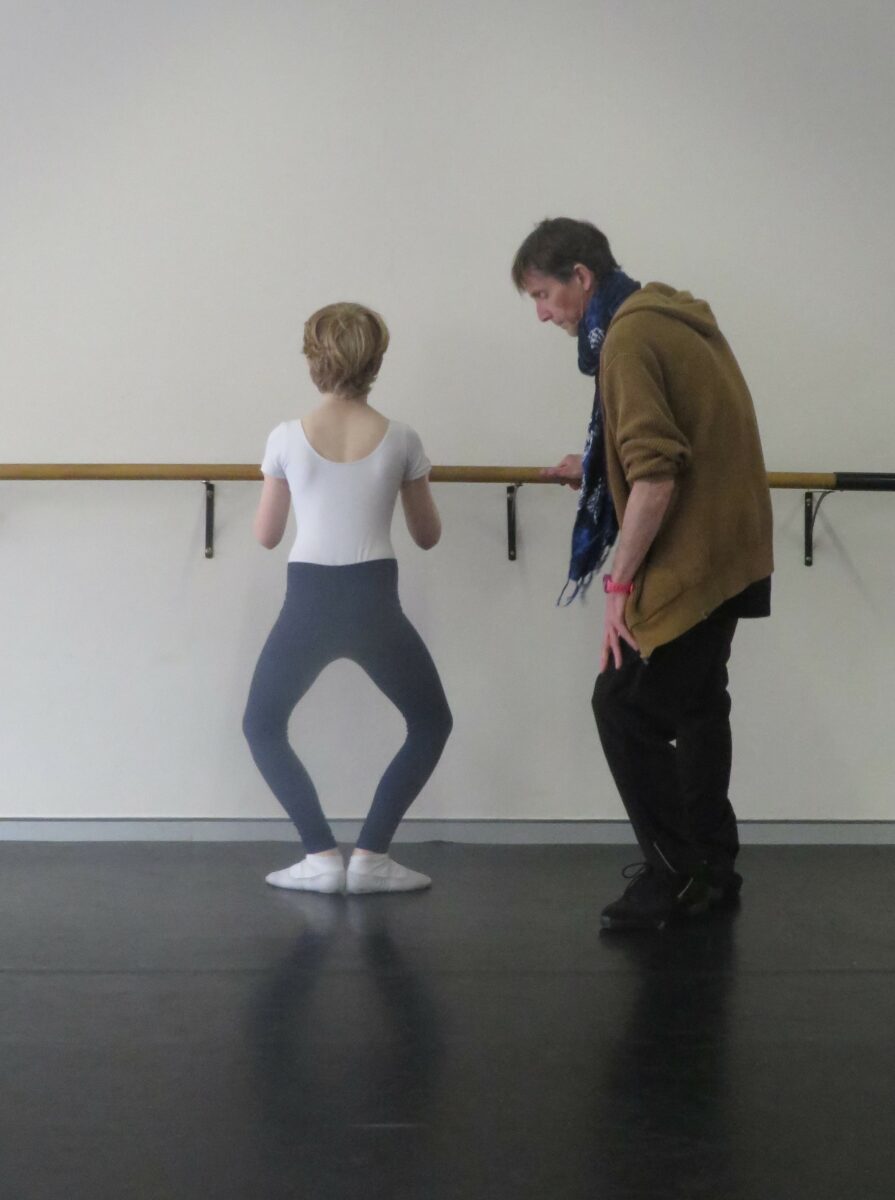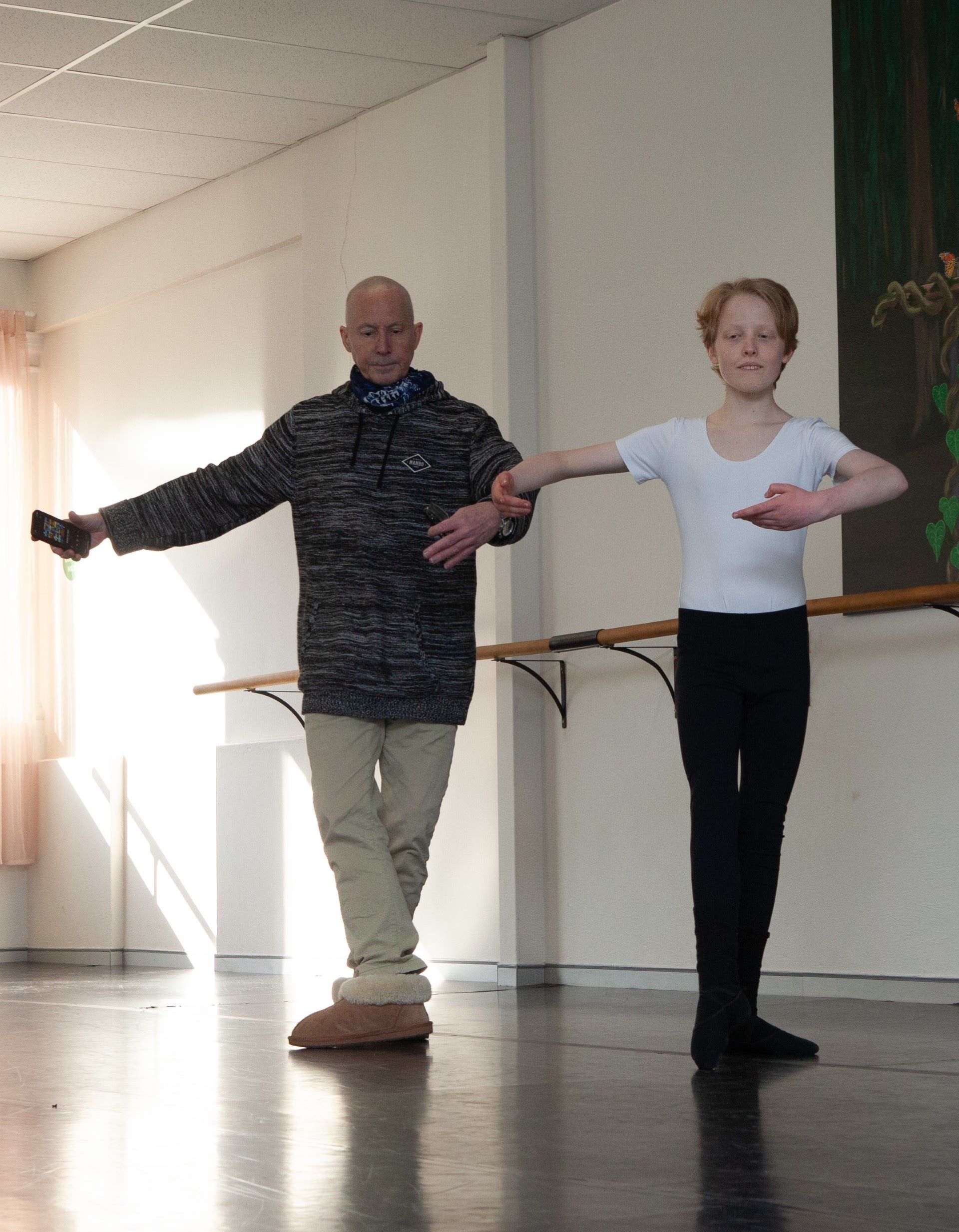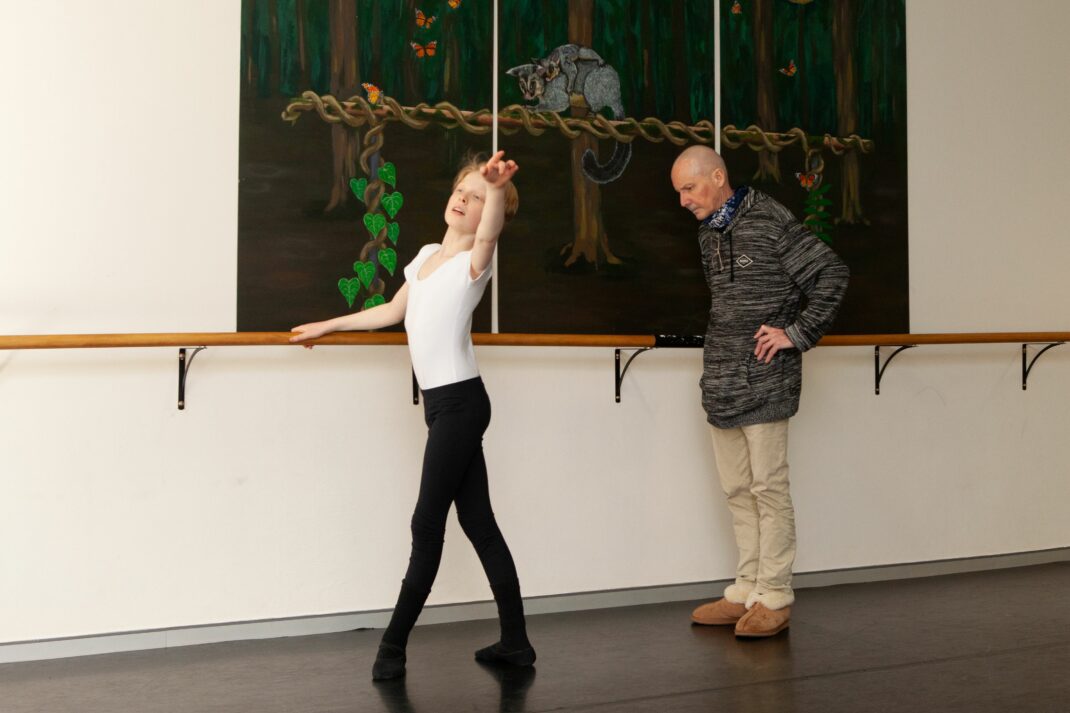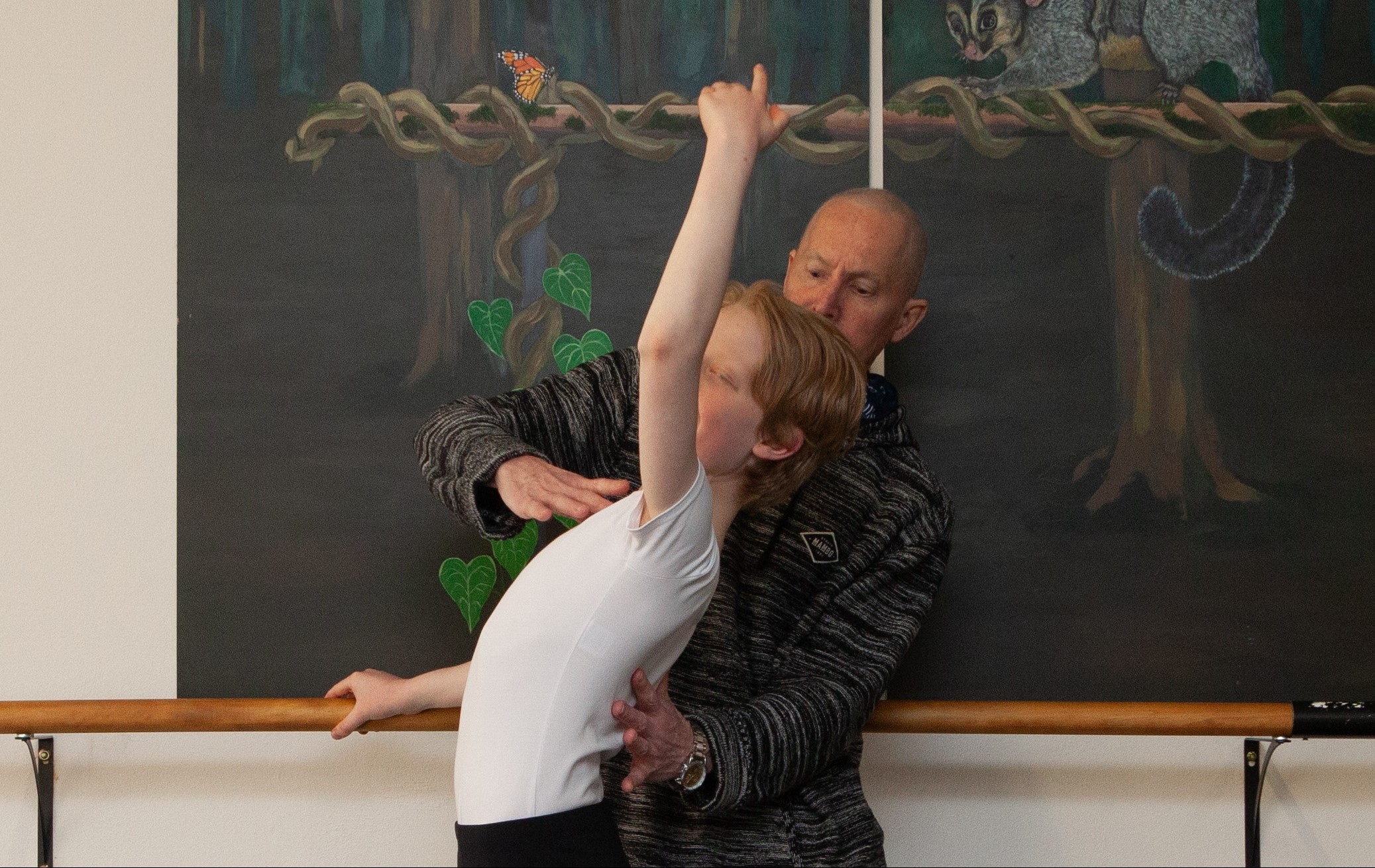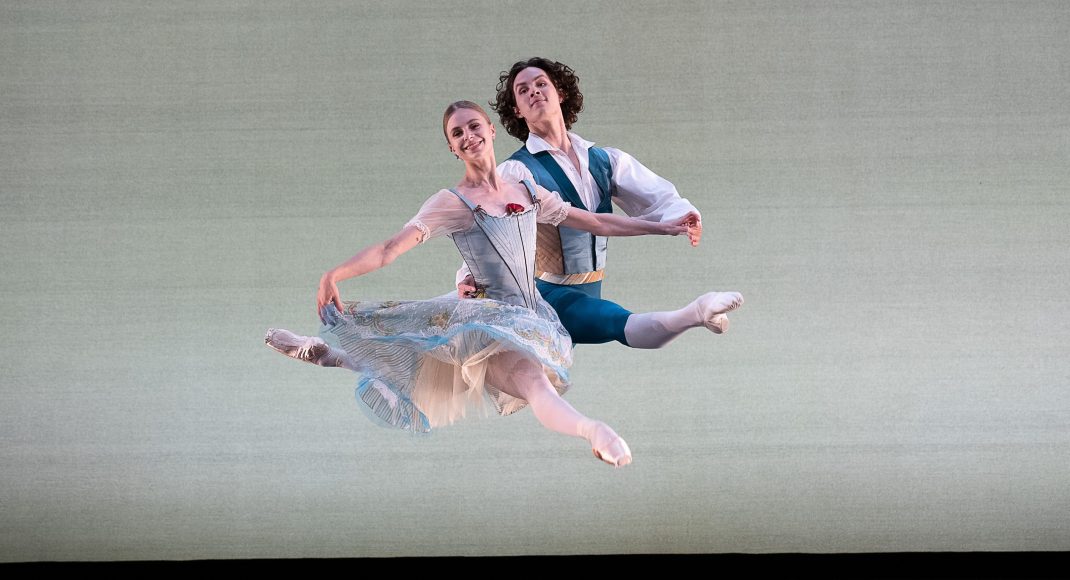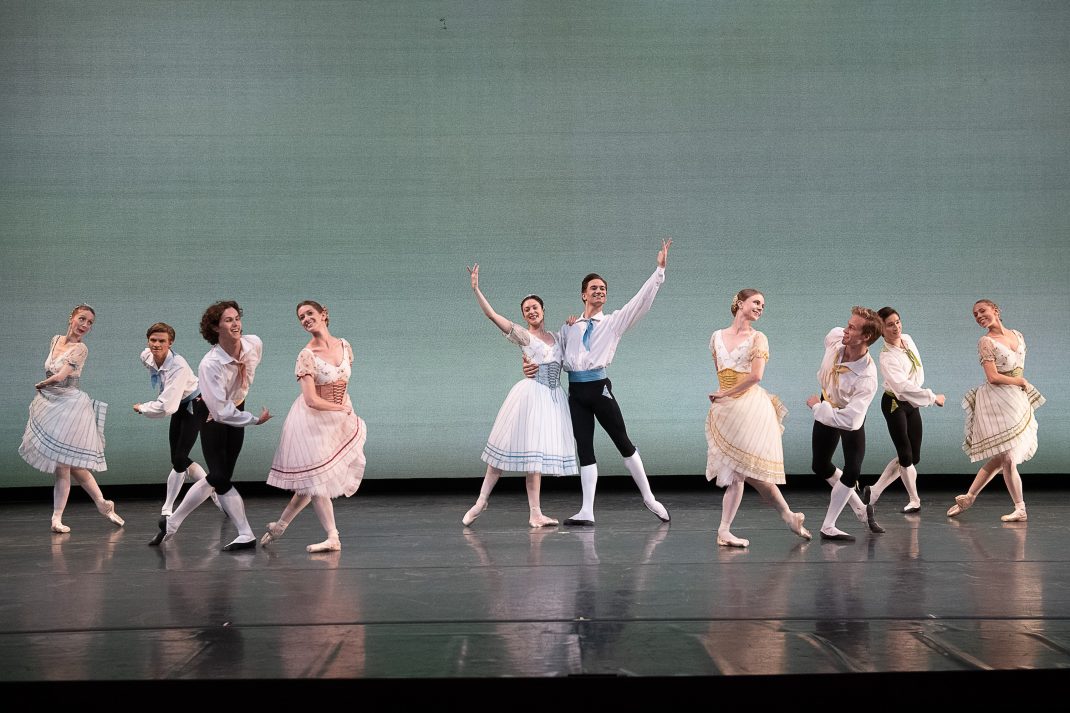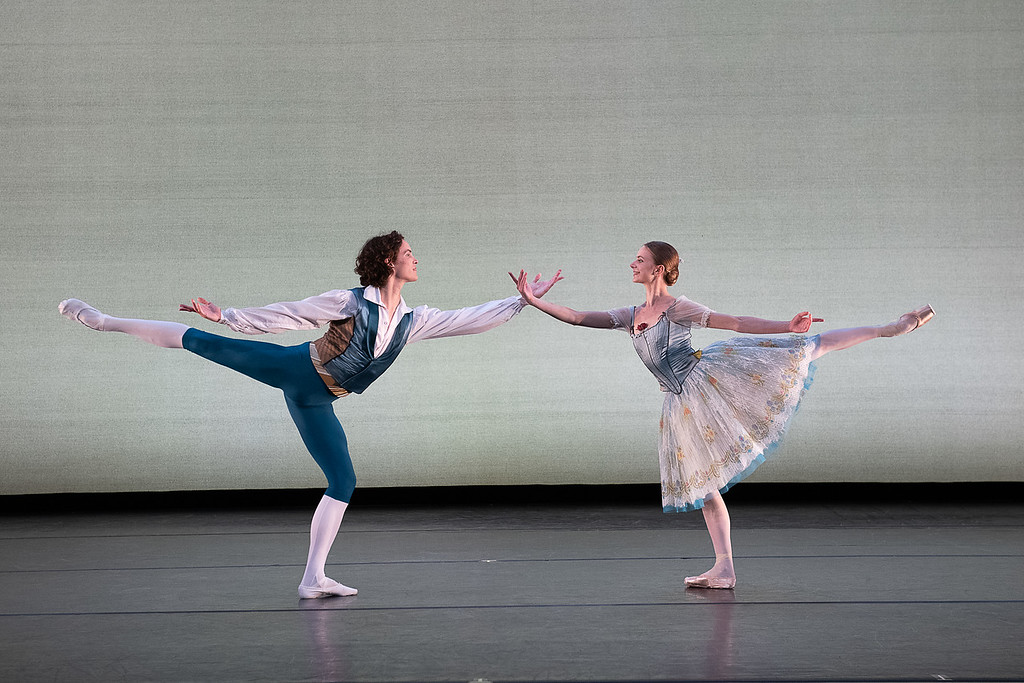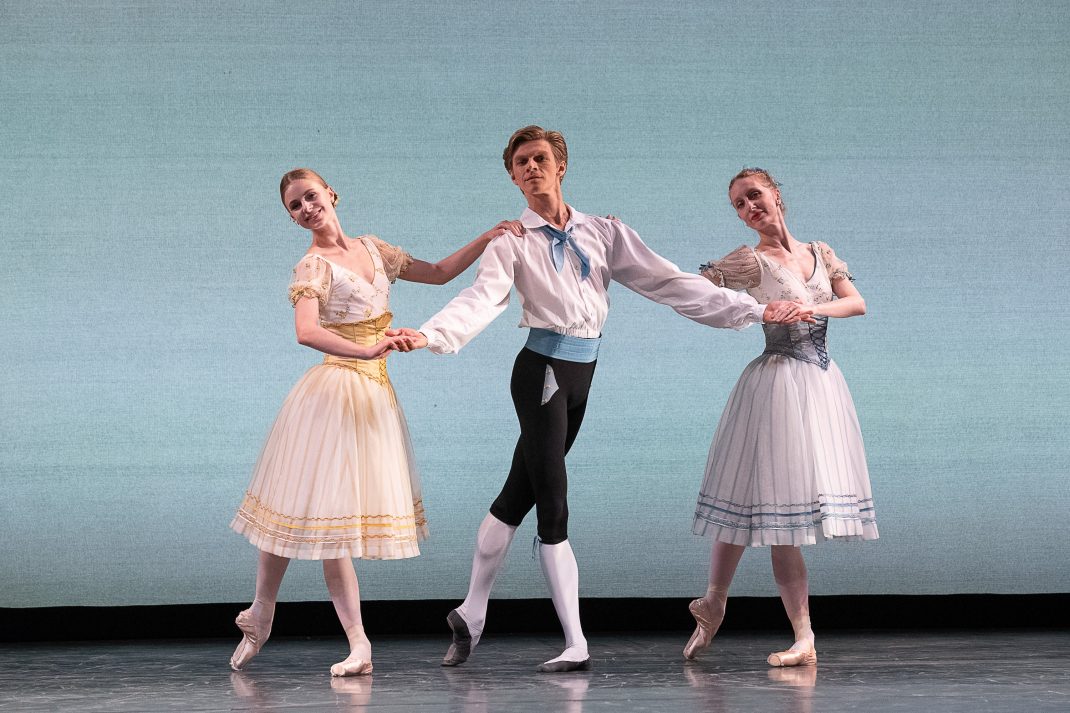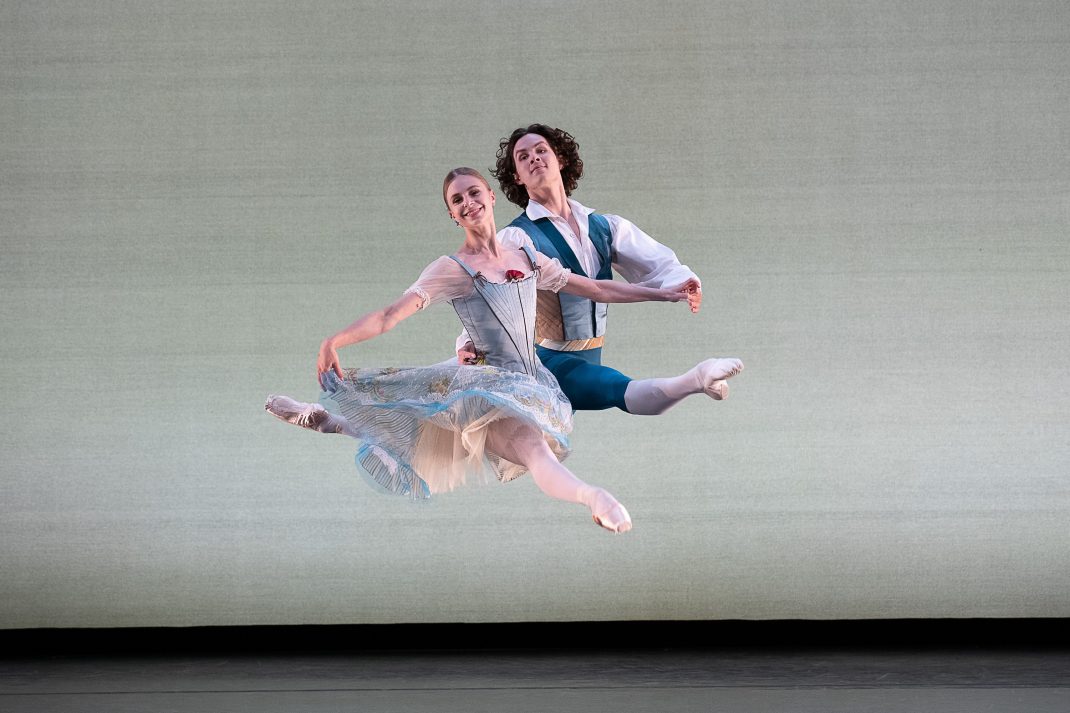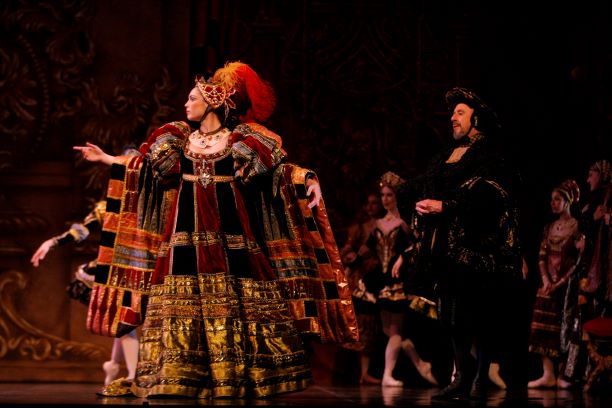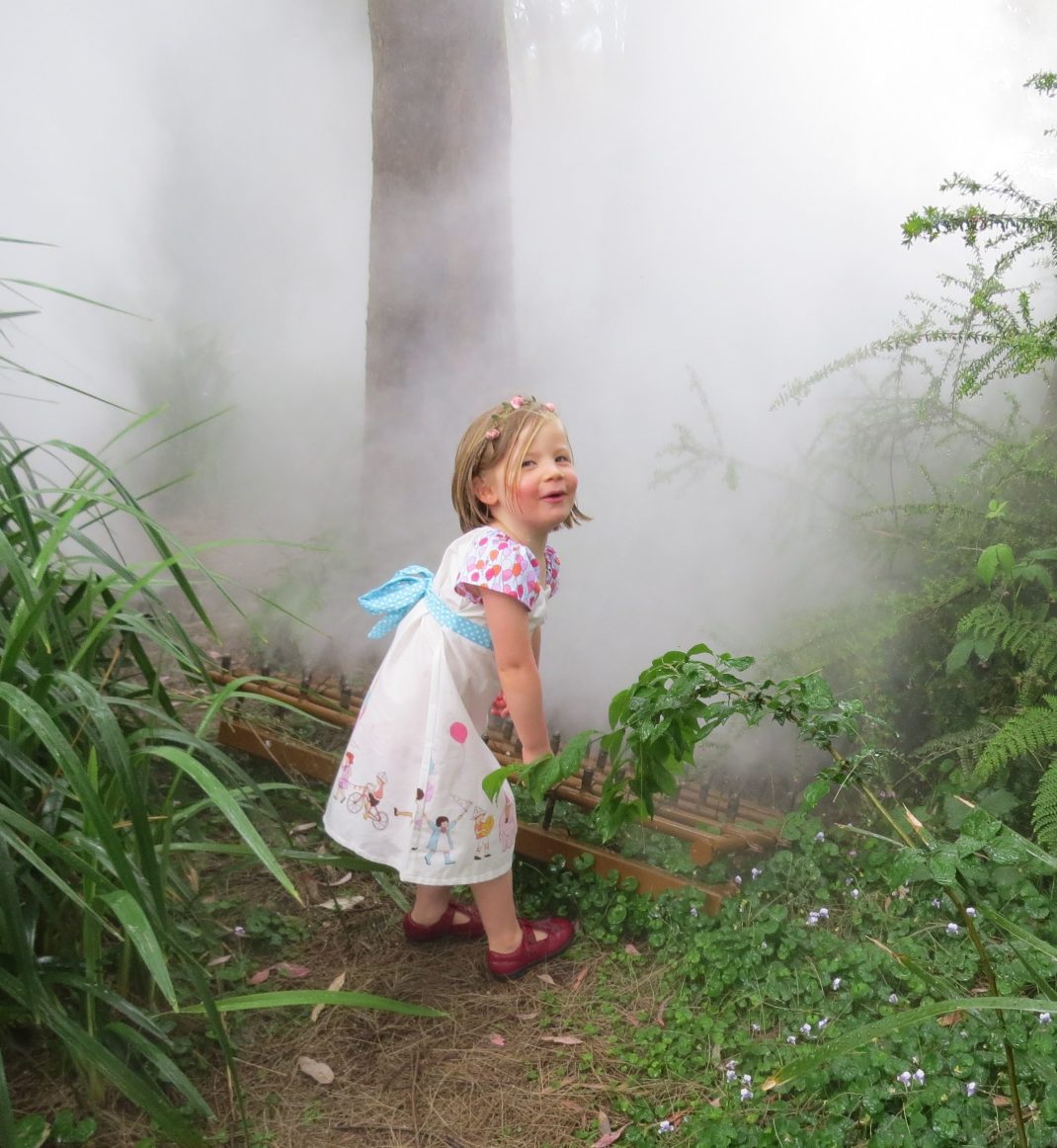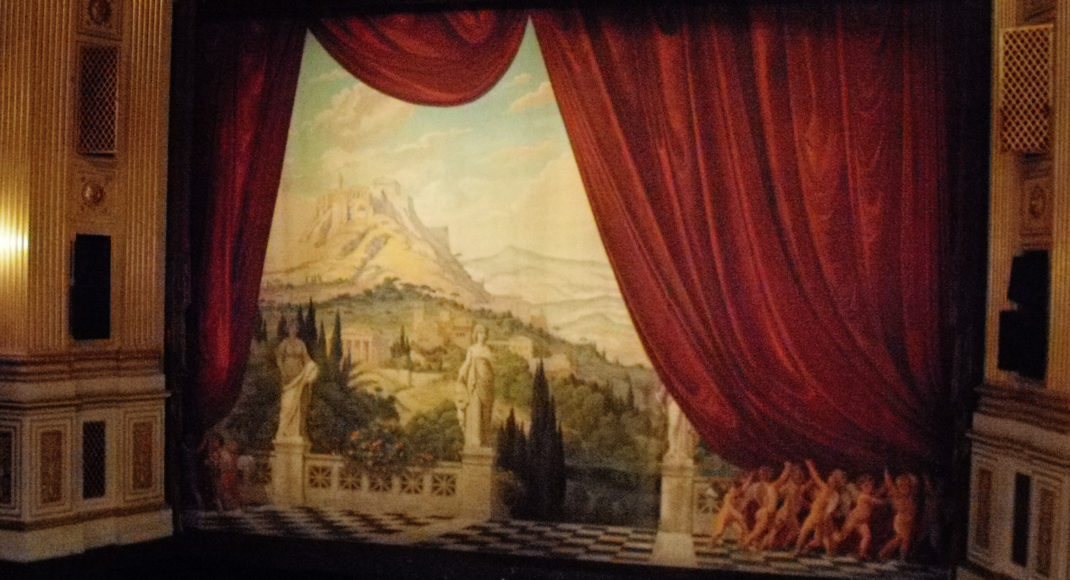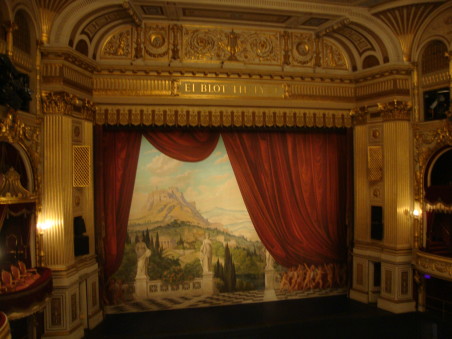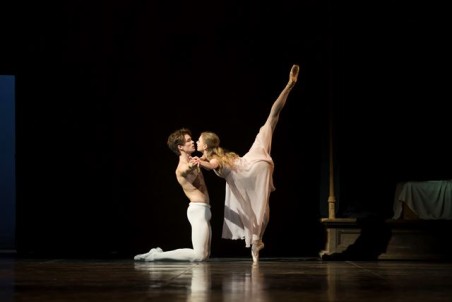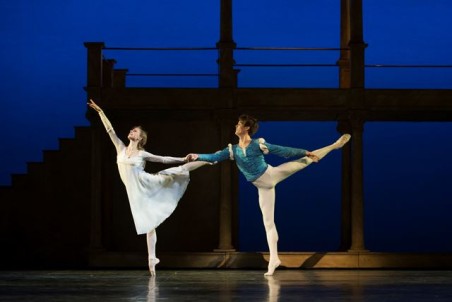My recent visit to Copenhagen, and the amazing production of John Neumeier’s Romeo and Juliet I saw there, sent me searching for something I wrote in 2005 for ballet.co in the UK (now DanceTabs). It was published in the ballet.co magazine in August 2005 as Royal Danish Ballet, 3rd Bournonville Fesitval, some personal thoughts.
As my ballet.co articles are not presently available online due to a server change, and also because I only recently found the text of the Bournonville article, which I thought was lost, I am re-publishing it below. Sadly, I do not have access to the images that accompanied the article, but I am including a wonderful photo of Erik Bruhn from an Australian production, which I mention in the text.
*********************
I suspect there aren’t many choreographers whose 200th birthday is marked by a display of fireworks. But as we spilled out onto the square in front of the beautiful old Royal Theatre in Copenhagen on the final night of the 3rd Bournonville Festival, fireworks cascaded from the clear night sky. The square was packed with onlookers and the Danish royal family stood on the theatre balcony to watch. August Bournonville, ballet master, choreographer and theorist, whose work lives on in the repertoire of the Royal Danish Ballet, would probably have been surprised. He is recorded as saying that he thought his work would quickly be forgotten after his death. It hasn’t, as nine days in Copenhagen between 3–11 June 2005 made clear.
Performances of nine different Bournonville works, plus a gala performance, gave a wonderful insight into the rich heritage that the Danes enjoy as inheritors of the Bournonville legacy. And pretty much every museum in Copenhagen, along with the famous Tivoli Gardens, had embraced the Bournonville festivities in some way and exhibitions and other events added context to the danced performances. To the large contingent of Danish and international press, the Royal Danish Ballet School also opened its classrooms, and the main company was more than generous with company classes to watch, receptions every night, a bulging press pack, and a host of guided tours—all to give us the best possible understanding of the nature of the Bournonville legacy.
I have to admit, however, to feeling a little Bournonvilled-out by the end of nine days. Quite honestly some of the Bournonville repertoire probably should be put out to pasture, or perhaps not paraded so publicly. In particular Far from Denmark, a work which describes how Danish naval marines hosted a party on board their ship to repay hospitality they had received while in Buenos Aires, sits uneasily (to put it mildly) in the context of the twenty-first century when it is not ‘done’ to stereotype others according to ethnic and racial characteristics. Gone are the days when people can black-up as Creoles and move a little like performers in a Black and White Minstrel show, or perform a ‘Red Indian’ dance as if at a pow-wow, without it looking embarrassingly out of place. Curiously, we can still go to an art gallery and look at paintings depicting events and aspects of life in ways that are now considered out of place. But put this kind of thing into dance, onto living, breathing twenty-first century human bodies, and it becomes inappropriate and, what’s more, laughable.
But there is, of course, so much about the Bournonville repertoire that is not like this. Two Festival performances of the best known of Bournonville’s still-extant creations, La Sylphide, would alone have been worth the trip from the other side of the world. In Australia La Sylphide is well-known to us, having been first staged here for the Australian Ballet in 1984 by Erik Bruhn, who then also danced the role of Madge in some performances. It has been restaged several times, most recently early in 2005.
So to see another staging, especially in Copenhagen by the Danes, was a much-awaited treat. Two casts, the first, led by Gudrun Bojesen and Thomas Lund, the second by Caroline Cavallo and Mads Blangstrup offered very different experiences. Thomas Lund is a breathtaking Bournonville technician, buoyantly soaring through jumps, beats and turns with apparent ease. And as James he alternated between bewilderment at what was happening to him and a passionate involvement with his Slyph. Bojesen, on the other hand, seemed not so involved, and not so easily able to connect with Lund as he was with her. With the second cast the roles were reversed, with Cavallo entering the role in a way that Blangstrup did not, despite his prodigious technique.
But perhaps most interesting of all with this Danish La Sylphide for me was the fact that the role of Madge, in both shows, was danced by a woman: Jette Buchwald in one cast, Lis Jeppesen in another. When the role is taken by a man it seems too easy for it to degenerate into pantomime and become sillier and sillier—certainly this has become the case with the Australian Ballet’s production where Madge seems to be less and less part of the Romantic duality of La Sylphide as time goes on. There was nothing silly or in the mould of pantomime from Buchwald or Jeppesen, just a quiet strength that allowed the story to move forward without unwanted distraction.
The presence of Buchwald and Jeppesen, who also appeared in senior roles in other performances during the Festival, was a reminder of the European custom of keeping older dancers on to perform character roles, and usually to teach as well. The other side of this custom was also noticeable in La Sylphide, although perhaps more so in Napoli. Bournonville choreographed for the children of the Royal Danish Ballet School as well as his company dancers, old and young. Almost any current dancer in the Royal Danish Ballet will regale you with stories of being ‘on the bridge’ as a child in the last act of Napoli to watch the onstage festivities as the two young lovers, Gennaro and Teresina, celebrate with their friends. It is so satisfying to see dance and its performance being shared across generations in this way
A conversation during the Festival with Royal Danish Ballet principal, Andrew Bowman, however, drew out a rather more political or perhaps nationalistic side of dancing Bournonville. Bowman was born in New Zealand where he received his early dance training from his mother. He completed his formal ballet training at the Australian Ballet School and was instantly noticeable when he joined the Australian Ballet. His attention to his partner was always visible, and still is, as was and is the huge pleasure he takes from being onstage. He joined the Royal Danish Ballet in 1996 and he still relishes telling the story of how he asked for a job after drinking tequila shots with Danish dancer and teacher Johnny Eliason in Brisbane, Australia, during one of Eliason’s coaching stints for the Australian Ballet. Now Bowman could easily pass for a Danish dancer so accomplished and at ease is he with the Bournonville technique. But during the interview Bowman reminds me, without bitterness I should add, that he will probably never dance the coveted role of James in La Sylphide. These leading Bournonville roles, with one or two notable exceptions— Lloyd Riggins being one, are reserved exclusively for Danes.
Beyond the performances one major, gorgeous-to-look-at, exhibition, called Tulle and Tricot: Costumes for the Bournonville Ballets, which was curated by Viben Bech of the National Museum of Denmark where it was on show, generated some philosophical questions. For example, how do you make an exhibition of dance costumes and related material come to life in the manner in which dance is alive? Can such a show ever capture the feeling of the live performance? Many costume exhibitions don’t even come close to being theatrical but Tulle and Tricot was a wonderful exhibition that engaged the viewer in so many ways. Costumes were hung so that they swayed gently in the breeze. Video footage showed them in motion in the ballets for which they were made. The space was lit beautifully. The captions were inviting. It was a real coup and deserves many bouquets.
And back to the Danish royal family: as an Australian I was of course fascinated when Crown Princess Mary, though now officially a Dane but always to us an Australian from Tasmania our ‘Apple Isle’, accompanied her mother-in-law, Queen Margrethe II to two performances at this Festival. The Queen herself attended every show and some of the receptions. She even received the press on one occasion. I couldn’t help but think how lucky the Danes are to have such prominent artistic leadership.
I look back on this Danish experience with much pleasure.
Michelle Potter, 14 August 2005
